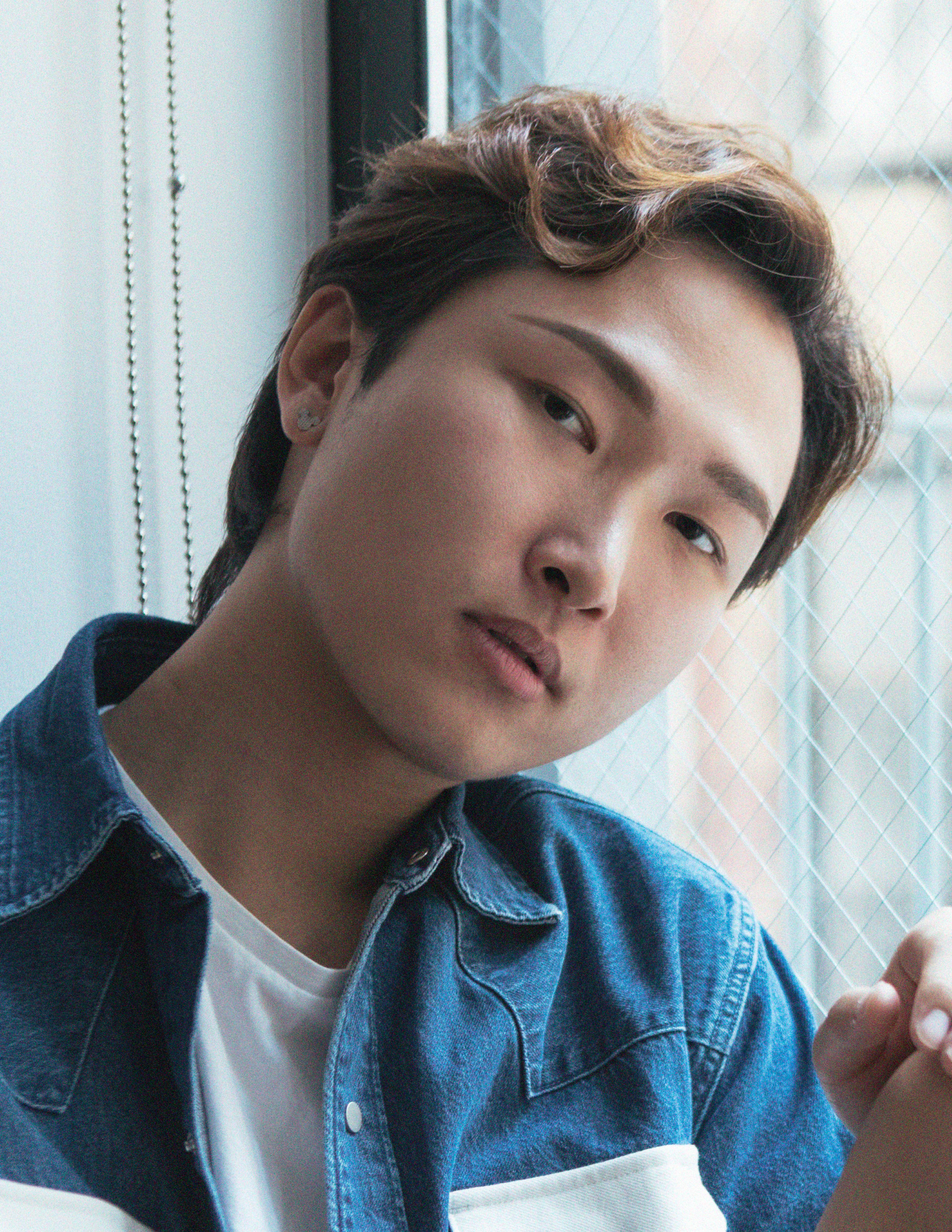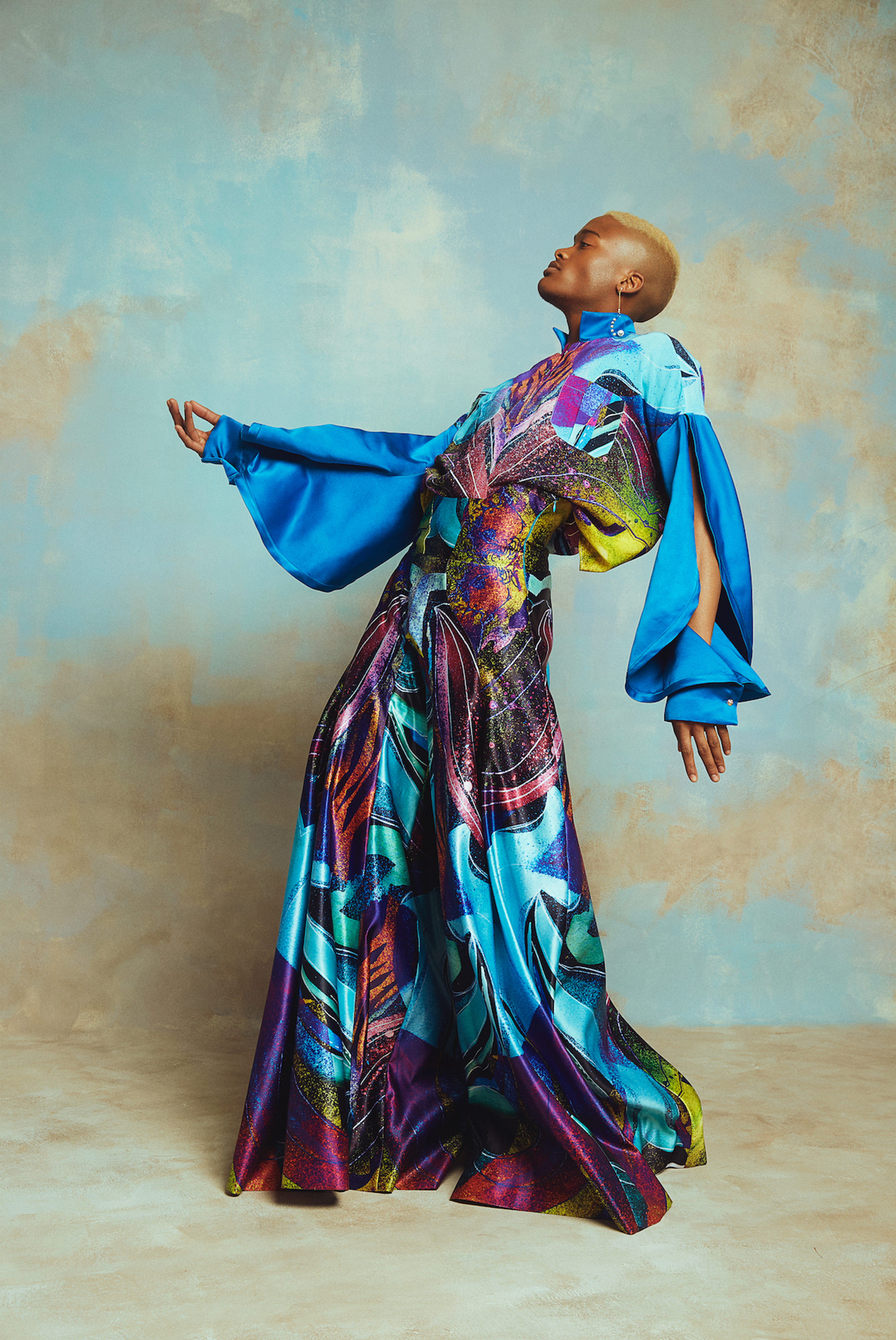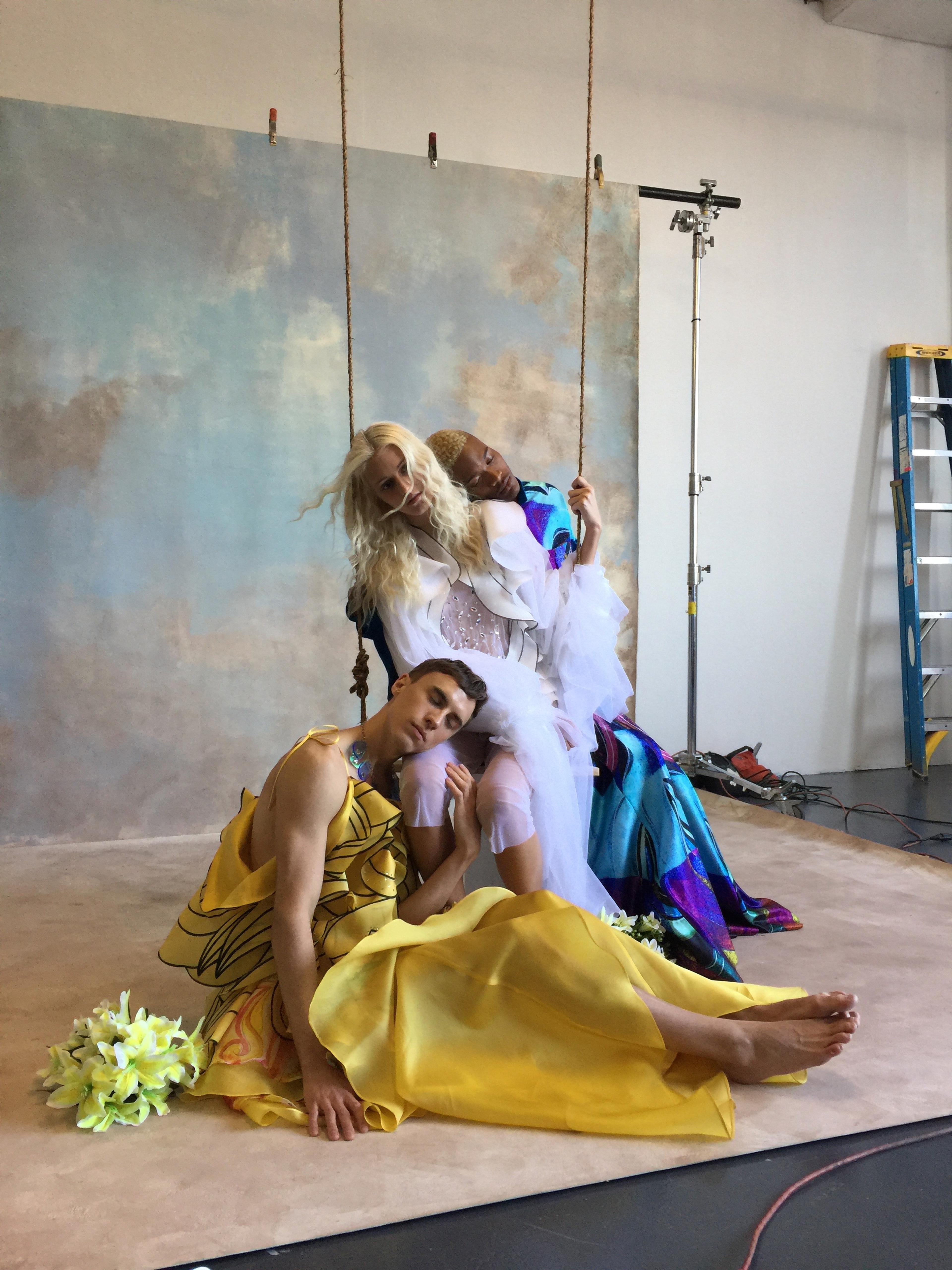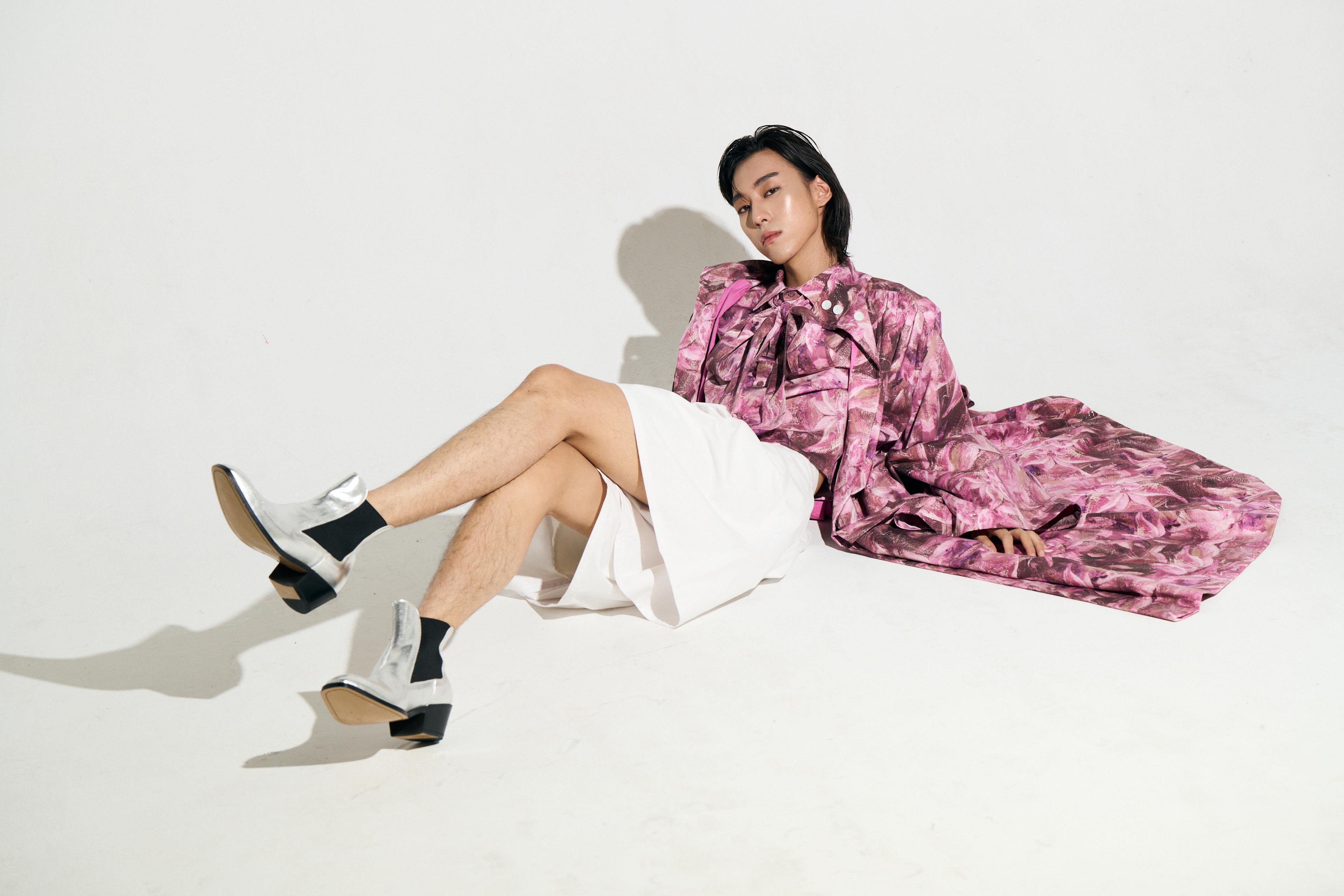In the ever-evolving world of fashion, there are trailblazers who transcend boundaries, challenging conventional norms and paving the way for a more inclusive, diverse, and expressive future. One such visionary is Subin Hahn, the founder of Subin Hahn Fluidwear. His journey is a testament to the power of authenticity and the profound impact it can have on an industry deeply rooted in tradition.
Subin Hahn’s story is not just about fashion; it’s a narrative of self-discovery, resilience, and an unyielding commitment to breaking free from the confines of gendered clothing. In this exclusive interview, we delve into the mind of the creative genius behind Subin Hahn Fluidwear, exploring the inspirations, challenges, and philosophies that have shaped a brand that defies convention.
Join us as we journey into a world where ambiguity is embraced, where gender fluidity is celebrated, and where fashion becomes a powerful tool for self-expression and empowerment. Subin Hahn’s story is a beacon of hope for those who have ever felt constrained by societal expectations, a reminder that the path less traveled often leads to the most extraordinary destinations.

Could you share the story behind the inception of Subin Hahn Fluidwear and what inspired you to challenge traditional gender norms in fashion?
The Subin Hahn Fluidwear brand has been my brainchild since I wanted an outlet to express my own interpretation of fashion influenced by many incidents in my early life. Everyone who knows me knows how obsessed I am with Disney princesses. Having collected dolls and dreaming of having my own “princess dress” as a boy, and experiencing gender expression conflicts in the real world influenced the way I designed my current fluidwear line. Now that I think about it, it is strangely similar to the Barbie movie that recently came out, where the main character experiences the contrast between her perfect fantasy land and the real world that isn’t necessarily positive in many ways, causing existential crisis. Seeing the parallel to my childhood as a young boy who dreamed of becoming a fashion designer and facing all the negative reactions because I am passionate about something that is commonly associated with women was absolutely fascinating to me. This conflict between reality and fantasy inspired me to think about who I am and to consider the many purposes in life that I was made for, which eventually led me to design gender fluid fashion.
There’s no doubt that the limited variety of gender expressions in men’s fashion influenced my decision to create a clothing line that embraces a wider range of gender expressions. When I was younger, wearing anything slightly related to femininity required some sort of mental preparation to deal with people who would look at me or comment negatively, but it was also cathartic to do things out of the box and not care about how others might perceive me. Interestingly, I still find myself riding the fine line between what can be seen as socially acceptable to wear and what can’t, which reflects my own dress practice and emotions I experienced earlier in my life. I feel like I’m subconsciously reflecting this tension from my own dress practice, which can resonate with people who have had similar experiences: men who do not want to conform to the way traditional menswear and unisex fashion is designed.
Additionally, it pertains to the fact that traditional femininity has been overlooked in society throughout history. I believe feminine empowerment is not an exception to the default of masculinity in many cases, especially the way the media portrays it. It is interesting to me that there are a lot of strong, girl boss, warrior images associated with traditional masculinity, which are often portrayed as empowering, while traditional femininity is often portrayed as weak and outdated, which I find contradictory in and of itself. A soft, delicate, caring, quiet yet determined mind is an immense power that is overlooked and mistreated too often. This attribute associated with softness is what continually inspires me about Disney princesses. I mean, look at Snow White and Cinderella who are often misinterpreted as providing unhealthy and outdated portrayal of femininity. In my opinion, they are the perfect archetypes of strong femininity that are driven by their softness, as they lost everything in their life but never complained about the circumstances and still found joy in their lives. Despite the hardships in life, they remain caring for others and hope for the best while doing the next right thing in the given circumstances that earn them what they deserve. In addition, Ariel, Belle, and Jasmine are often oversimplified to the point that they are portrayed as simply sacrificing everything for a man, which is simply not true considering the fact that despite what society imposes on them, they dreamed of an ideal lifestyle and took action in order to attain that lifestyle without losing their softness and caring natures. Rapunzel and Elsa are another great archetype of soft yet strong femininity. They were mistreated in their early years but constantly tried to find purpose in their lives with a redemptive heart for the past, which requires strong determination and bravery that modern society often overlooks. I find these princess characters very inspiring yet sadly they are very much misinterpreted in the media in an attempt to portray traditional feminine beauty as weak and undesirable, which is often done by people who do not really have a better understanding of these characters.
The misconception of traditional feminine beauty, the complexities of my personal dress practice, and my experience of being mistreated for my “feminine” trait led me to embrace femininity, delicate sensibility, and flamboyance as a backbone for my brand’s style. I believe my brand was born to empower the beauty of traditional femininity while advocating gender equality. Although it may seem self-contradictory from a contemporary perspective, it is the best way for me to communicate my thoughts, faith, and dreams in this society that can grow for the better.

Photography by Wesley Sun
“Embrace your ambiguity and reinforce your character” is a powerful statement. How do you translate this philosophy into the designs and overall aesthetic of Subin Hahn Fluidwear?
I have had many instances where people call me ma’am over the phone because I have a female-sounding voice. On rare occasions, some people can’t tell my gender even when they look right at me in the face. As a child, I thought this was irritating, but as I grew older, I came to realize that it may be one of my unique defining characteristics.
As I started working on preliminary designs for my first capsule project, I knew I was leaning towards gender-neutral fashion that is more inclusive than traditional binary fashion. I didn’t want to do just women’s or menswear that I couldn’t fully see myself in. The words genderless and androgynous didn’t really speak to me personally as these words feel like an erasure of the complex expressions that exist inside me, and gender-neutral or unisex didn’t really resonate with me either because they were often more geared toward one side of gender expression like basic menswear. As I delved deeper into figuring out the point of making my collection, it became apparent to me that ambiguity and fluidity were the most defining characteristics of my personality. It seemed more sensible to me to create a fashion system that can confuse people in a way that they can’t easily identify as they are used to, in an attempt to embrace complexity as a unique element of one’s individuality. This train of thought led me to come up with the statement “Embrace your ambiguity and reinforce your character,” which became an essential part of my work.
This idea is embodied in the word “Fluidwear” which I later came up with and it translates my intent to free the minds of the audiences as well as my approach to the development of each item which is outside of the binary gendered systems of fashion. I can only hope that the ambiguity of gender expressions, the eclecticism within a collection that covers a wide range of aesthetics allow people to freely explore fashion in their own terms regardless of how they identify themselves.

Subin Hahn Fluidwear has been redefining the fashion landscape since 2018. What were the initial challenges you faced when introducing this innovative concept to the market?
The size issue was one of the challenges I faced since the gender binary sizing system isn’t quite suitable for gender-fluid clothing. The traditional gendered sizing systems differ internationally as well and it can be difficult to figure out how they translate to one another and it feels somewhat impractical to be honest. Other than some exceptions that might work in some situations, I am not convinced that it is necessary to have so many variable size systems in fashion. When it comes to footwear, some European and Asian countries use the same standardized sizes for women and men, while the US uses different ones. It’s also common for European and Asian footwear sizing to include centimeter measurements. This lack of a consistent international sizing system is a significant issue. I wanted to challenge this by introducing a simplified sizing system that is based on chest measurement, similar to the way gender-neutral clothes are commonly sized. People who fall within the same chest size range can wear the same sizes and it allows for a more unisex approach to sizing. This system makes it easier for customers to choose the right size and reduces the need for multiple-size charts.
Another challenge was the stereotype that clothing should fit a certain way based on gender. People often expect clothing to fit a particular way, especially when it comes to menswear. So, when I introduced designs that were more fluid and didn’t conform to traditional gender expectations, it was met with resistance from some quarters. Some people had a hard time accepting that clothing could be designed in a way that allowed for a greater range of movement and expression.
Additionally, there was a learning curve for me in terms of how to market and position my brand. It was important to communicate the philosophy and message behind Subin Hahn Fluidwear effectively. I had to find a balance between creating fashion that was inclusive and challenging traditional norms while also making it appealing and accessible to a broader audience.
Despite these challenges, I received a lot of positive feedback and support from people who appreciated the concept and were excited to see more gender-inclusive fashion options. Over time, the brand has continued to evolve and gain recognition in the fashion industry.

In your journey with Subin Hahn Fluidwear, how do you measure the success of your brand beyond traditional metrics like sales and profit?
While sales and profit are important metrics for any business, I believe that success for Subin Hahn Fluidwear goes beyond these traditional measures. One of the primary ways I measure the success of my brand is through its impact on people and the broader fashion industry.
- Inclusivity and Representation: A key measure of success is the extent to which Subin Hahn Fluidwear is able to provide a platform for gender diversity and inclusion in fashion. If the brand can make people feel seen, heard, and respected regardless of their gender identity or expression, then I consider that a significant success.
- Challenge to Norms: Success is also reflected in the brand’s ability to challenge and expand traditional norms in fashion. If Subin Hahn Fluidwear can contribute to breaking down the rigid boundaries of gendered clothing and inspire other designers and brands to follow suit, then it has achieved a meaningful impact.
- Positive Feedback: Hearing positive feedback from customers who feel empowered and confident when wearing my designs is a great indicator of success. Knowing that the clothing I create can have a positive influence on someone’s self-esteem and identity is incredibly rewarding.
- Education and Awareness: Success is also measured by the extent to which the brand can educate and raise awareness about the importance of gender diversity, fluidity, and acceptance in the fashion industry and society at large.
- Collaborations and Partnerships: Collaborations with other brands, artists, and organisations that align with the brand’s values can also be a measure of success. These partnerships can amplify the brand’s message and reach new audiences.
- Long-Term Impact: Finally, I believe that the long-term impact of Subin Hahn Fluidwear will be a crucial measure of success. If the brand’s influence continues to grow over time, leading to lasting changes in the fashion industry and a more inclusive approach to clothing design, then it will have achieved its overarching goals.
Ultimately, the success of Subin Hahn Fluidwear is deeply intertwined with its ability to foster a sense of empowerment, acceptance, and freedom of expression for individuals who have been marginalized or excluded by traditional fashion norms.
As we draw this inspiring conversation to a close, we are left with a profound appreciation for Subin Hahn and the transformative impact of Subin Hahn Fluidwear. His unwavering dedication to redefining fashion as a vessel for self-expression, inclusivity, and empowerment serves as a beacon of change within an industry traditionally bound by convention.
Subin Hahn’s journey teaches us that authenticity is a force that can shape not only the clothes we wear but also the world we inhabit. Through his visionary creations, he encourages us all to embrace our ambiguity, reinforce our character, and challenge the status quo.


Comments are closed.